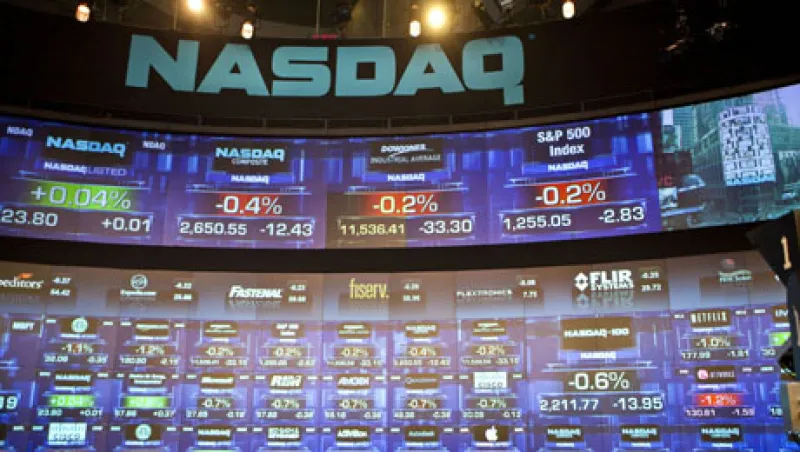It was no Black Monday — October 19, 1987 — but the Nasdaq crash of August 22 reminded everyone that stock markets are fickle beasts. The Nasdaq shut down for most of that afternoon when a flood of data from fellow U.S. exchange NYSE Arca compromised its price quote software.
The New York-based exchange identified and fixed the problem within a half hour, but spent the late morning and afternoon reaching out to its securities information processing governing body as well as market participants. Despite the three-plus hour gaffe, Nasdaq finished up 1.08 percent on the day, climbing to 3,638.71.
The disruption seemed slight compared with other recent mishaps, like U.S. exchange operator BATS Global Markets’ failed 2012 IPO and last year’s Facebook malfunction. But the risk and scale of another such disturbance remain extraordinarily tough to estimate, says Damian Handzy, CEO of New York–based risk management firm Investor Analytics. While internal investment risk management has been a focus as of late, with the recent arrest and indictment of two former J.P Morgan traders associated with the $6 billion dollar-plus London Whale debacle, broader-scale marketwide risk may be harder to nail down with such paltry information available.
Looking at the biggest daily losses for the Dow Jones Industrial Average on a normal distribution curve, Handzy notes that there were several high-single-digit drops, a couple in the low double digits and then none any larger before the index plunged 508 points, or 22.6 percent, on Black Monday.
The takeaway: These seemingly random events are difficult to predict based on sheer numbers, Handzy says. While analysts and portfolio managers forecast market swings and turns and bubble bursts, identifying the trends of a single particular trading day, specifically a major market drop, is beyond the scope of statistically significant data sets.
“No matter what curve you use to estimate that risk, you’re wrong,” he says. “And that’s why risk management is hard. You’ve got extremely small amounts of data from which you’ve got to extrapolate some general rule.”





